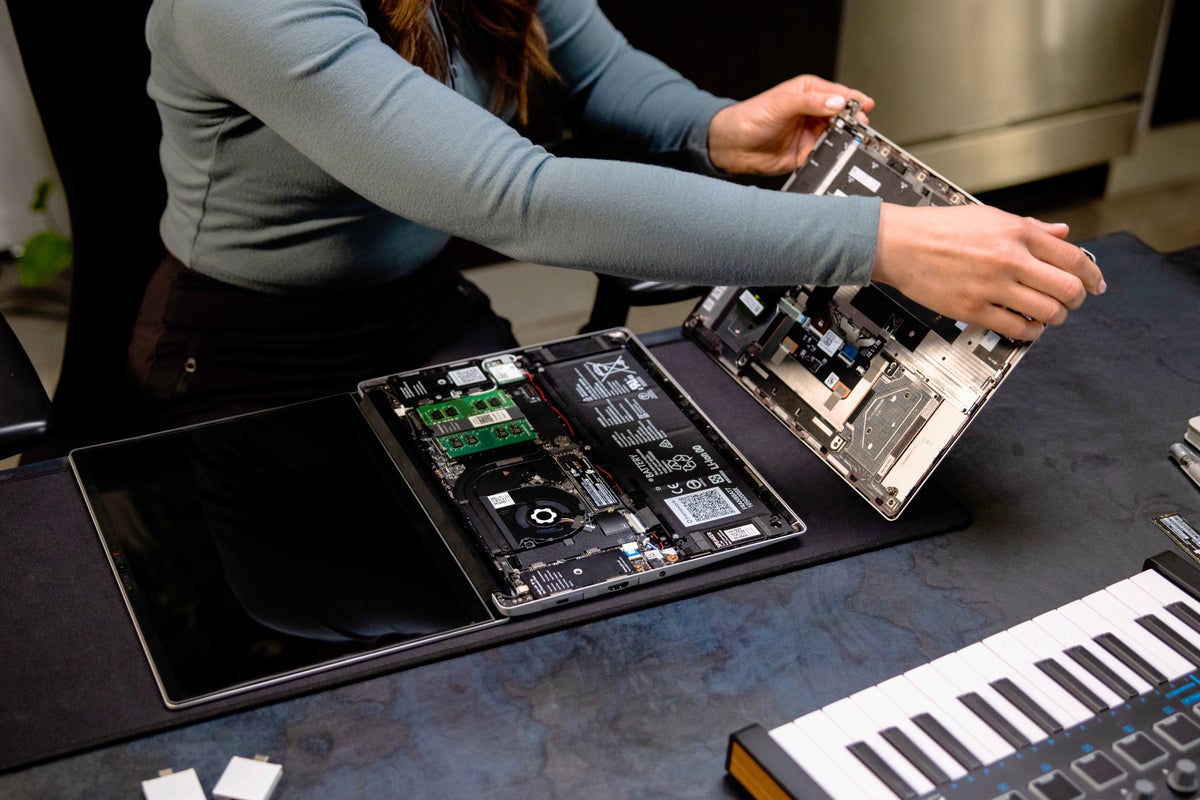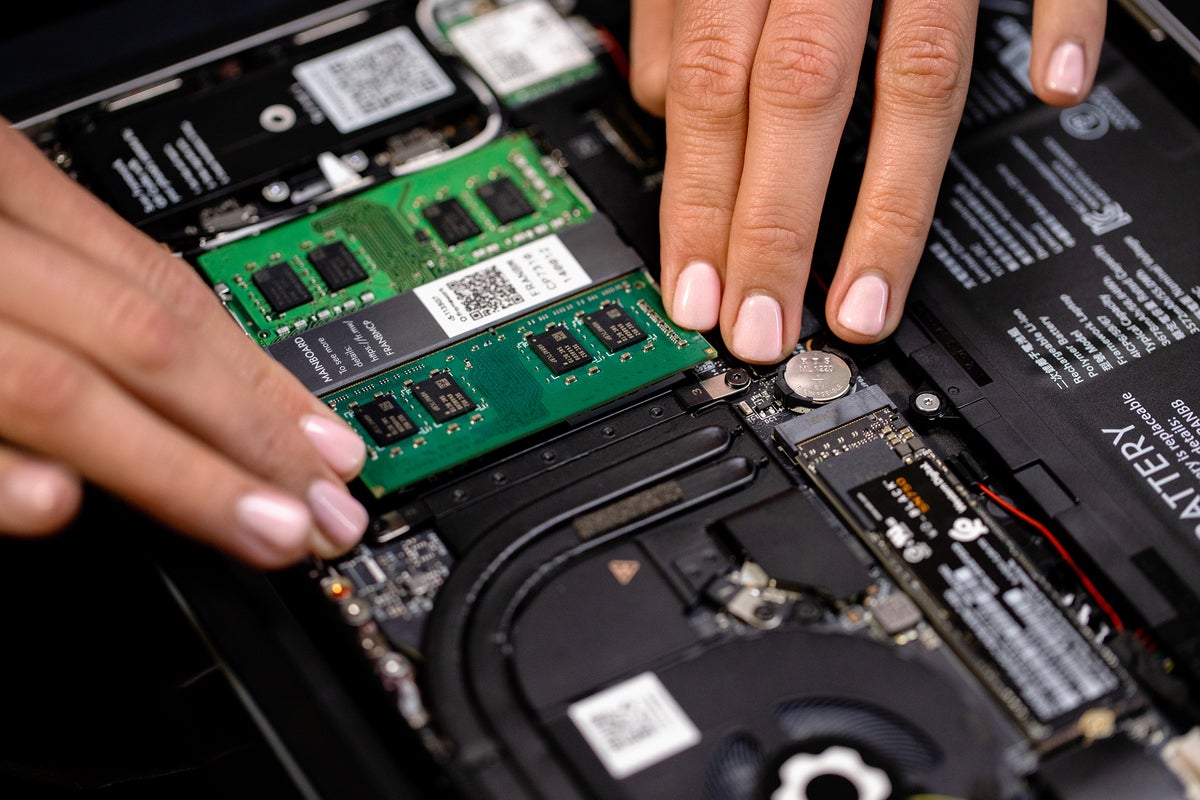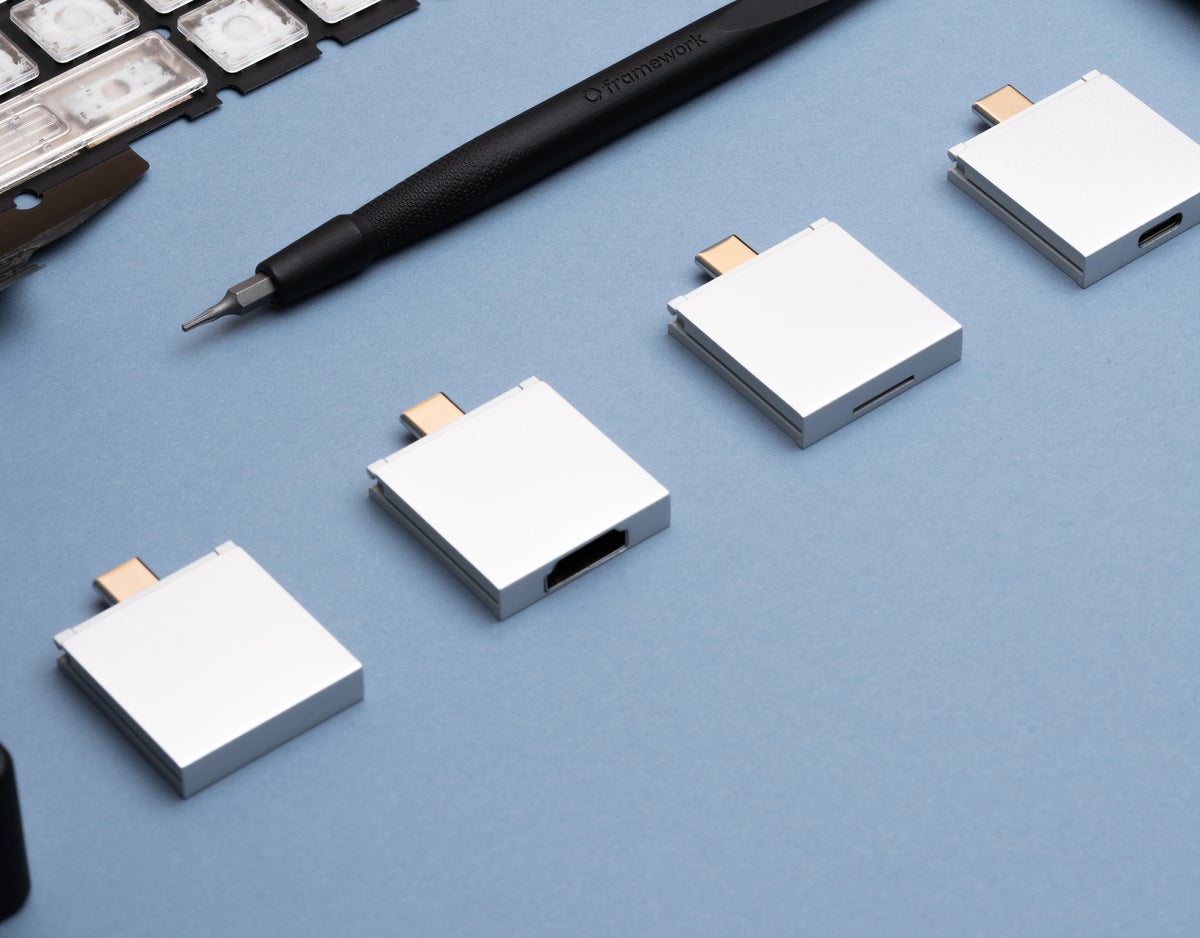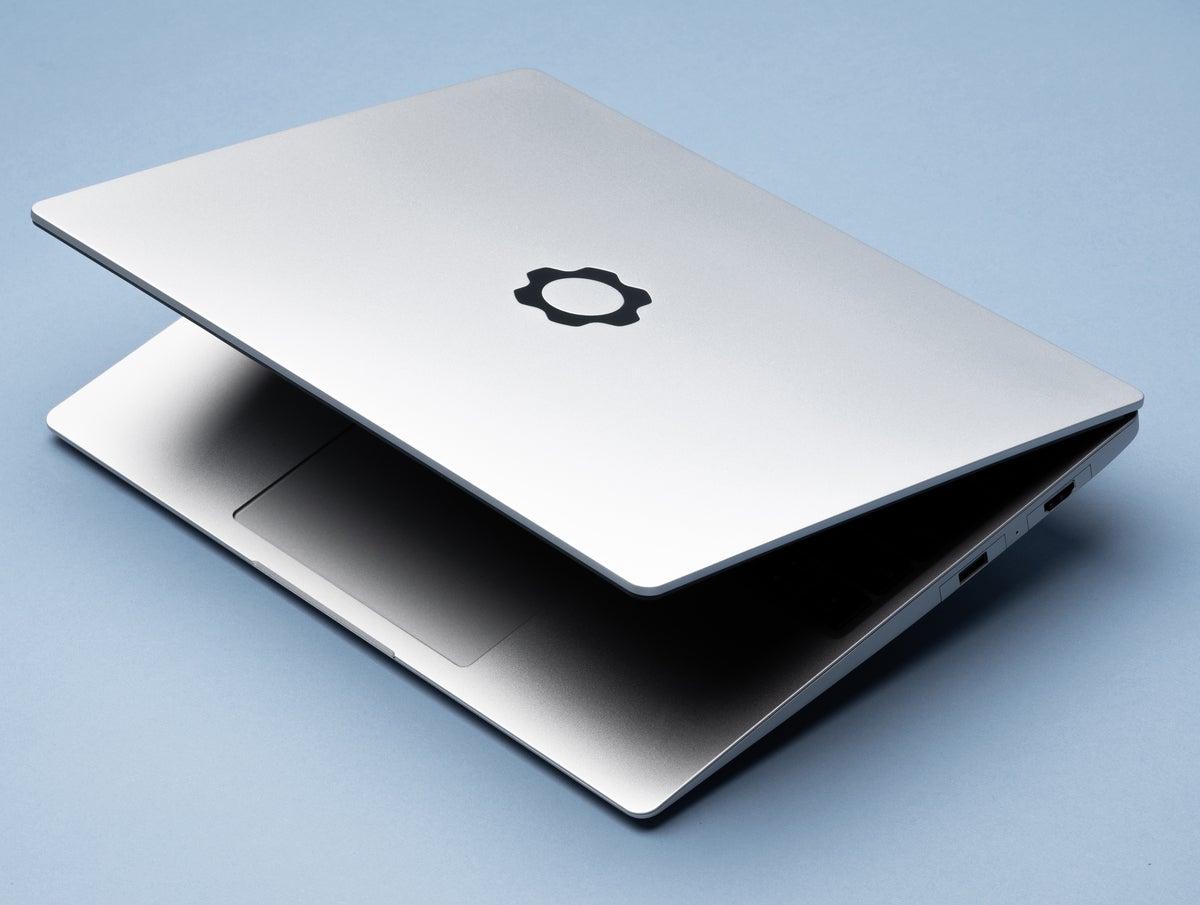[ad_1]
An upgradeable laptop has long been the Holy Grail of laptop features. And much like the famed Grail, it’s never been found.
Many have tried and all have failed. The most recent attempt was Alienware’s Area 51m R1, which launched with lofty goals but ultimately never offered meaningful upgrades.
Enter Framework, which pledges to finally bring the Holy Grail home to Camelot with a modular, do-it-yourself and upgradeable laptop. Being a witness to all of the prior quest failures, well, we have our doubts. Many of them.
But after talking at length with Framework founder Nirav Patel we again found our hope rekindled and maybe, just maybe this time someone will succeed. Patel seems to have answers for most of the problems that brought down everyone else, including TDP limits and consumers simply breaking the things while building them.
Below, you’ll find a breakdown of the Framework laptop’s specifications, followed by our Q&A with Patel. It’s insightful.
Framework specs
- CPU: Intel 11th-gen
- GPU: Iris Xe integrated graphics
- RAM: DDR4/3200 in two SO-DIMM slots
- Storage: Standard M.2
- Battery: 55Whr
- Keyboard: 1.5mm travel dome
- Webcam: 1080p 60fps
- Networking Wi-Fi 6E
- Display: 13.5-inch 3:2 2256 x 1504 resolution
- Availability: Summer of 2021
- OS: Linux or Windows
 Framework
FrameworkThe Framework will be sold as built laptops or DIY kits to consumers.
Framework laptop Q&A with Nirav Patel
PCWorld: Can you share more details on how it can be ‘upgraded’ and repaired? I’m guessing the mainboard can be can swapped out down the road—but that largely means the company has to do the QA and fulfillment of boards which I’m going to guess are custom. How can you account for power and thermal requirements down the road?
Patel: Every module in the system is end-user replaceable for upgrade or repair purposes, and parts are made available through the Framework Marketplace. Our Expansion Cards slide and click into place in the housing. The replaceable bezel is magnetic attach. For the internal modules, each uses a single labeled connector and a minimal number of fasteners. The only module that is more complex to replace is the mainboard that everything connects into, which would be a more rare item to change (and something that no other notebook currently offers).
In general, mobile CPUs are designed by Intel and AMD to target the thermal constraints of specific form factors. We’ve designed in a thermal budget to max out Intel’s “U” thermal tier, 28W continuous load at the CPU with boost levels above that. We’re developing additional mainboards with new CPU platforms ourselves at Framework as well as opening up our specs for third parties to be able to develop compatible ones and offer them through the Framework Marketplace.
PCWorld: So there will be an AMD version?
Patel: We haven’t announced specific plans for additional versions, but we have designed the Framework Laptop to be able to use future mainboards we develop with different CPU platforms.
PCWorld: DIY laptops have been pushed before, but most of the vendors who tried gave up because customers would destroy the laptops and then ask for refunds. How can you account for customer abuse in these situations?
Patel: We’ve designed the product to be as easy as possible to repair and as difficult as possible to accidentally damage, and we’re publishing repair guides and videos to make the experience simple. Because each module is individually replaceable, if someone does accidentally break a part, we have the ability to get them back to working state by replacing just that piece rather than a full machine. We’ll also work to steer the customer to products that match their skill-sets and interests. Most consumers will pick up our traditionally pre-built system rather than the DIY Edition, and if they need to do an upgrade or repair that they aren’t comfortable with, we’ll guide them to drop into their local repair shop with the replacement part in hand.
 Framework
FrameworkRAM, Wi-Fi and SSD are built around open sockets but the CPU is soldered in place.
PCWorld: One issue with previous attempts that we found building your own laptop was the really delicate ribbon cables for the displays. Even people used to messing around inside of a PC would destroy them. Are you going with a standard ribbon cable for the panel?
Patel: We use a fairly robust connector that is designed to be cycled a few dozen times. In the event a user does end up with a broken cable at some point, replacements are available through our Marketplace.
PCWorld: As a follow-on to the question about destroyed hardware while being built or serviced, do you expect consumers to be responsible enough to accept they have to buy a new motherboard and CPU because they crushed the die during a swap out?
Patel: We’ve designed the product to make it hard to accidentally break during the normal upgrade and repair flows, and we do generally trust folks to do the right thing with the product.
PCWorld: Would you like to see a return to socketed CPUs instead of BGA or has that ship long sailed?
Patel: It’s great that memory and storage are still available as socketed, and we’ve gotten a ton of positive feedback on choosing to go with sockets there. The ship has sailed for socketed CPUs in a mobile form factor, so we instead focused on making the mainboard itself easy to replace, and keeping the other high value parts like memory, storage, and Wi-Fi separable from it.
PCWorld: One gaming laptop vendor “promised” upgrades too, but when the thermal and power requirements failed to matchup, it could not offer the upgrade and subsequently found itself in litigation. Do you think your 28 watt TDP target insulates you should a next-gen Intel or AMD push outside that envelope? I guess the TLDR is really: What upgrades can you promise down the road and for how long?
Patel: We do feel good about our 28W target. We expect to be able to offer great performance within this form factor for the foreseeable future, and we’ll be developing both additional mainboards and Expansion Cards as we go.
PCWorld: And just to be clear: In theory if we get to a 20th-gen Intel or AMD part—you just ask the ODM to make a board with that part for the chassis?
Patel: For notebooks in general, each mainboard is custom to each chassis. This ends up being easier for us since our chassis remains the same each year, reducing the amount of new development that needs to be done for each board. We will continue to work with our manufacturing partners to pull in new CPU platforms.
PCWorld: The heat pipe gets reused I imagine, but you could eventually change that as well?
Patel: The heatsink / fan module will in general be paired with the mainboard and get replaced with it, due to mounting hole and die size changes that occur from generation to generation.
PCWorld: What about onboard GPU at some point? Could you in theory build a board with 28 watt CPU and a low wattage discrete?
Patel: This is probably not a path we’ll take in this form factor, but discrete graphics is a space we’re very excited about for the future.
 Framework
FrameworkThe Framework latop feautres port modules built around the USB-C interface and Thunderbolt 4 interface to let consumers pick their own port.
PCWorld: What do the port modules use for a connection standard?
Patel: We’ve utilized USB-C as the physical interface and Thunderbolt 4/USB4 as the electrical interface. Between USB-C Alt Modes and TBT4/USB4 bridges, we have a ton of flexibility to adapt to different protocols and standards. We actually have a list of about 50 cards we’re currently exploring which all fit within that model.
PCWorld: Is there a reasonable business model built around only selling upgrades? Is it really better than just selling someone a new laptop?
Patel: We really focused on aligning the incentives around longevity, between consumers and our business model. We’re enabling people to stay on the product for as long they would like through upgrading and getting replacement parts for the laptop they have rather than needing to buy a whole new one. The consumer of course benefits from that, but we do too because that becomes a consumer we have a long term economic relationship with, rather than just a person we sold one item to.
This ultimately all adds up to an ecosystem where we have not just our customers and us, but also third parties who want to participate. Managing a healthy ecosystem with functioning network effects is a great place for us to be as a company.
PCWorld: What do you think would cause the need for a new shell or chassis?
Patel: I think we all have consumer electronics products that are dinged up after a few years of use. A consumer can choose to fix that on a Framework Laptop by ordering replacement housing parts if they would like. Our bezel is also magnetic attach for color customization.
PCWorld: A modular design won’t be as cost effective as a built laptop—what do you say to a consumer to convince him or her that it’s worth paying more upfront for a Framework laptop over a competing OEM laptop?
Patel: We won’t be charging a premium for longevity. We’ll be setting pricing to be competitive with other notebooks that use the same processors. In addition to being upgradeable and repairable to work well for longer, the Framework Laptop enables customization from day one with the Expansion Card system that lets consumers pick the ports they want. We’ve also designed the product to be an all-around great notebook, with a 2256×1504 3:2 screen, 1.5mm key travel, a 1080p 60fps webcam, and more.
PCWorld: As the saying goes, a warranty is only as good if the company is still in business. Can you give consumers a sign you’ll still be here in five years?
Patel: We’re committed to fulfilling the promise of product longevity, and we’re building and growing the team to enable that. Many of us on the team have come to Framework from successful consumer electronics startups, and we’ve brought the lessons learned with us.
PCWorld: I know I sound pretty pessimistic, but it’s only because I’ve long believed in upgradeable laptops as a concept, but I’ve only seen failure in my 25 years of hoping someone gets it right. What can you say to me to make me believe this time it will work?
Patel: The best thing I can say is that it isn’t a side project for us. The core of our mission, strategy, and product design is longevity, upgradeability, and reparability, and we’ve built a team to deliver on that.
 Framework
FrameworkThe Framework upgradeable laptop will ship this summer.
[ad_2]
Source link